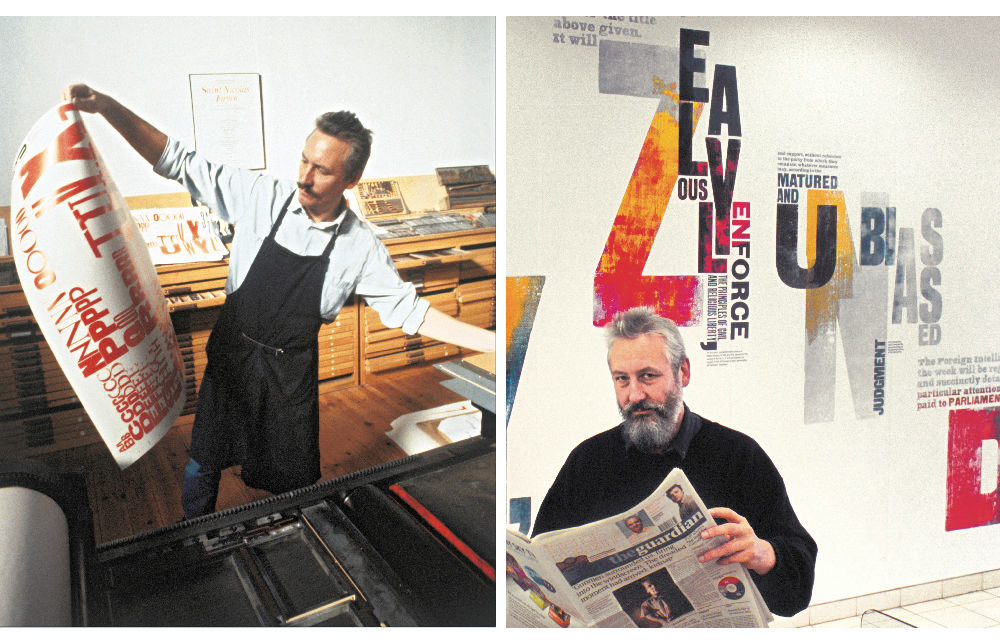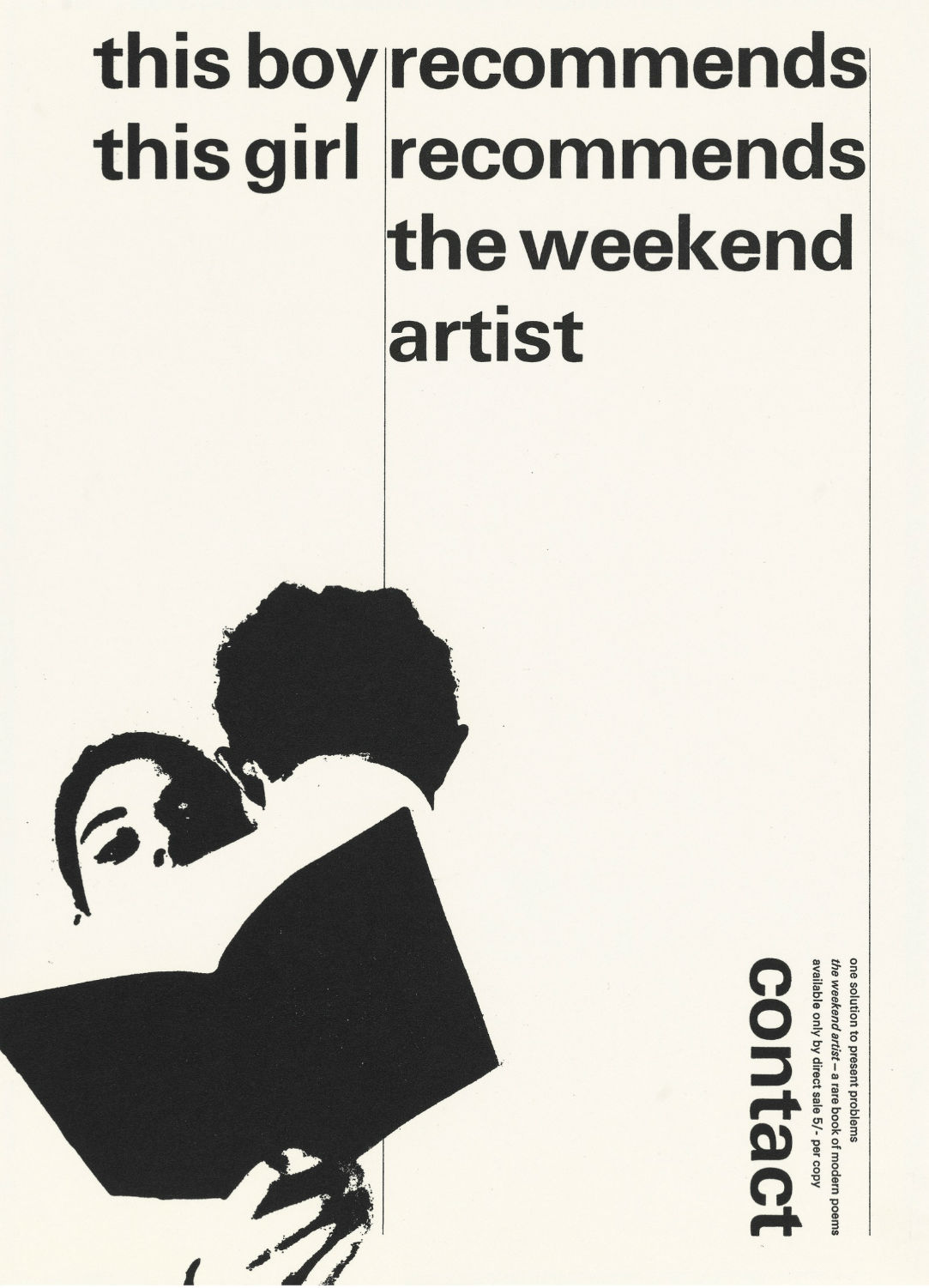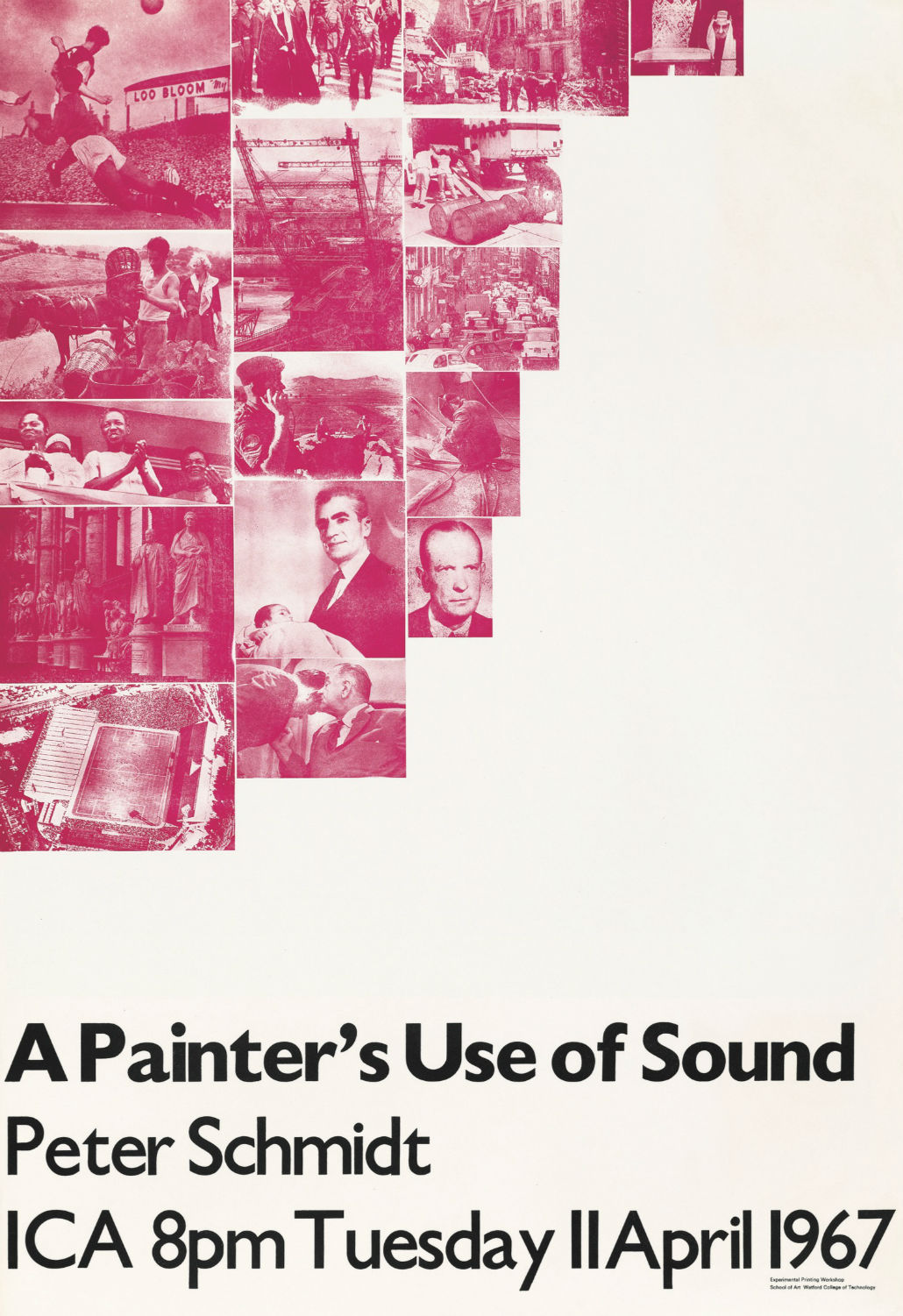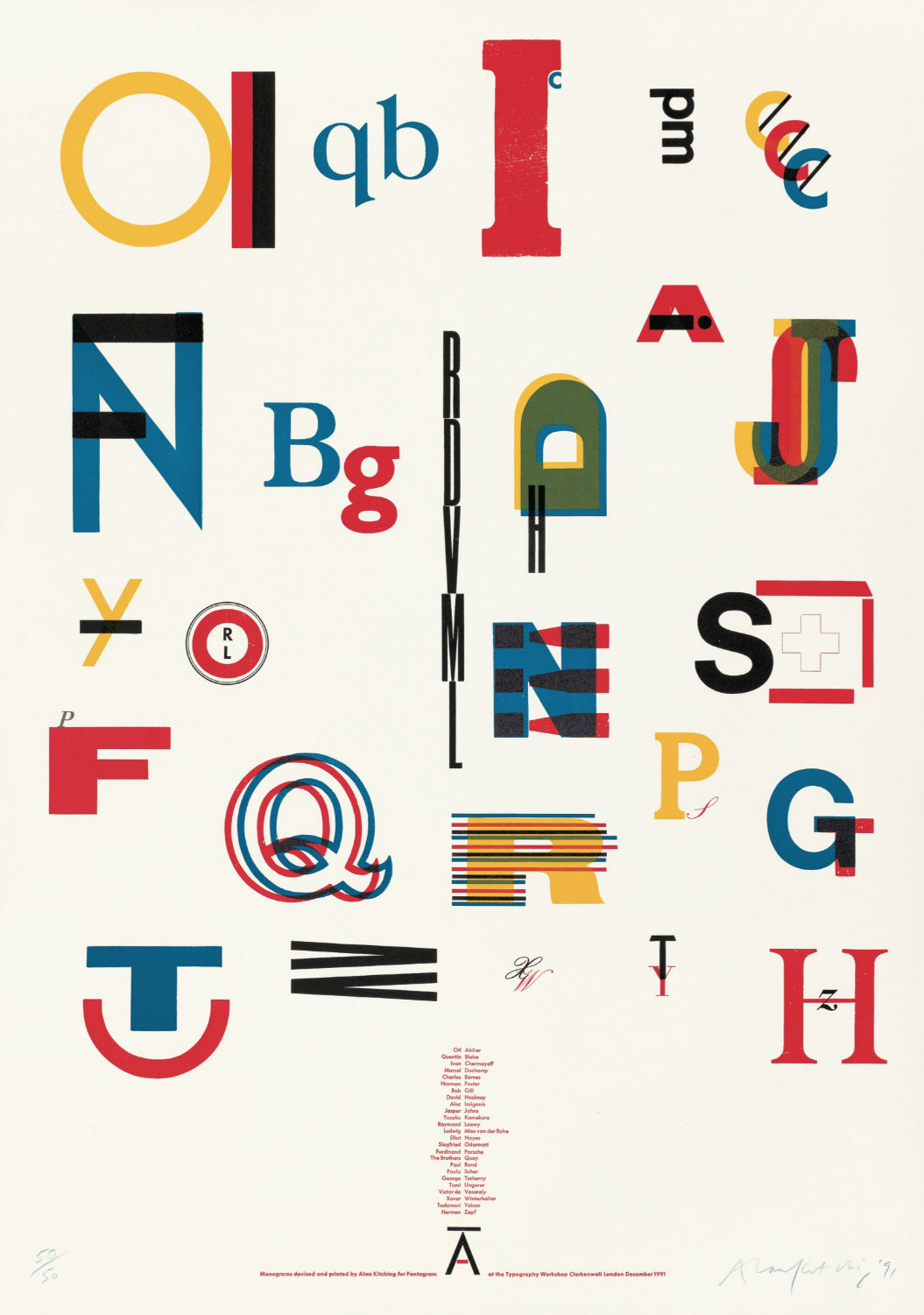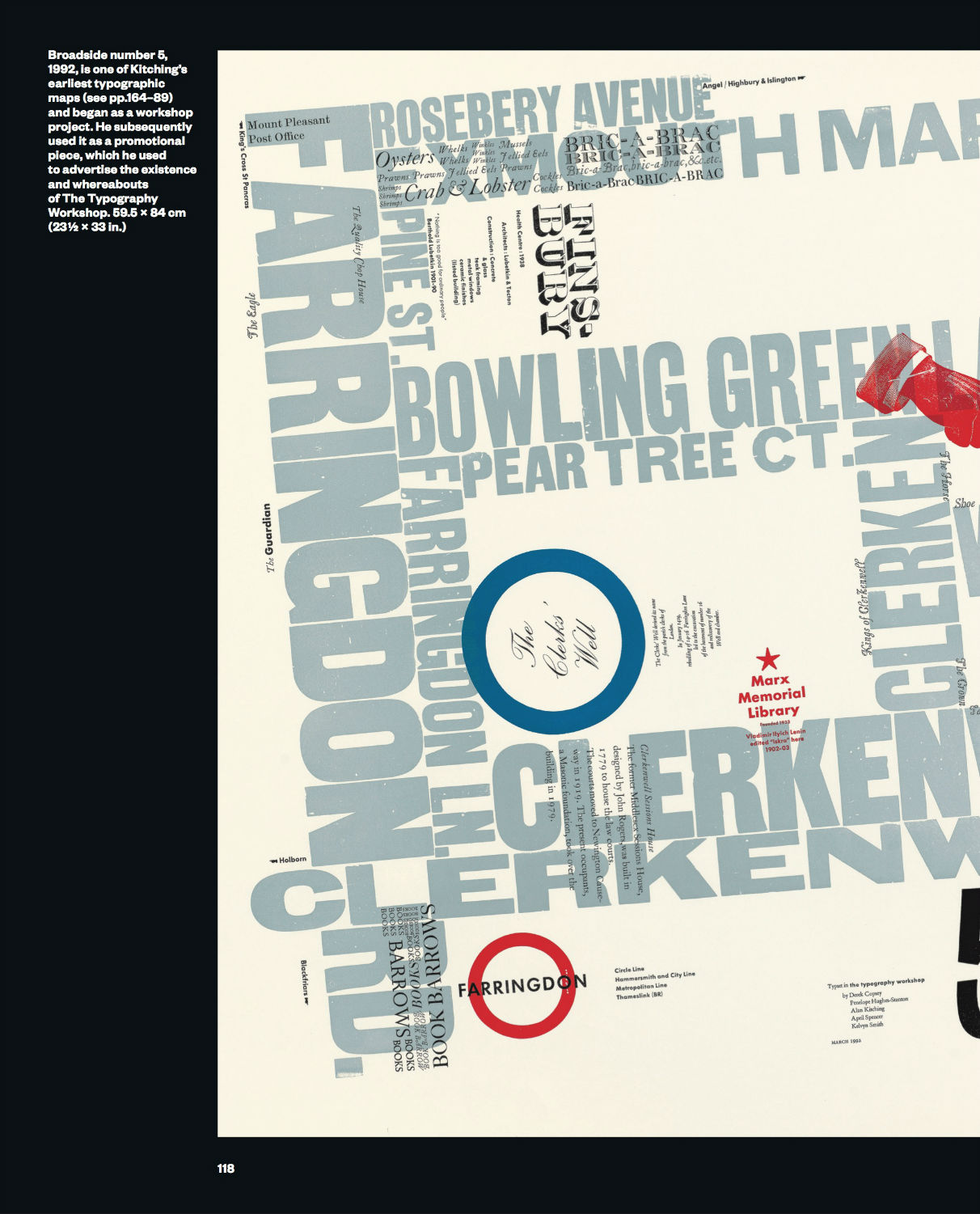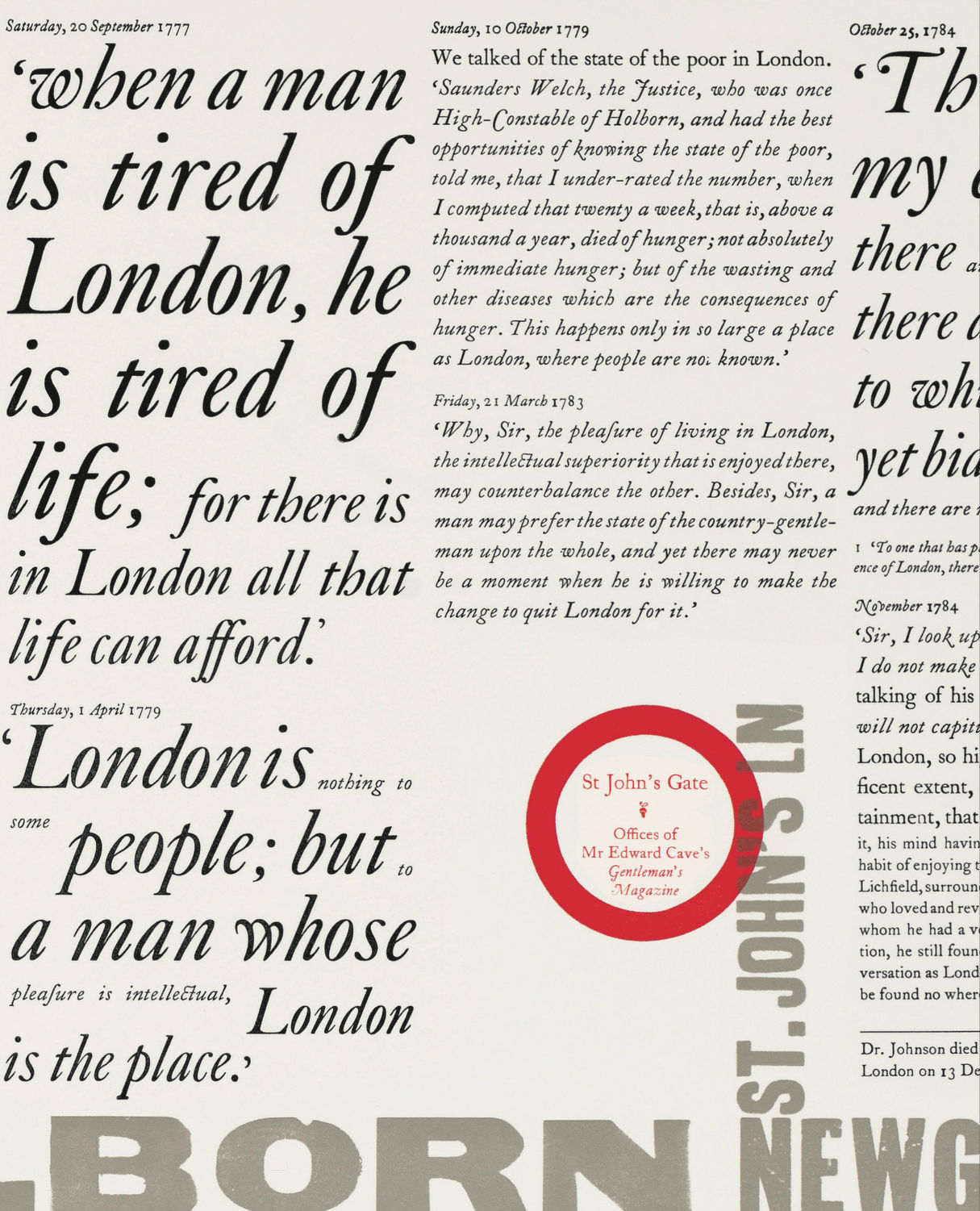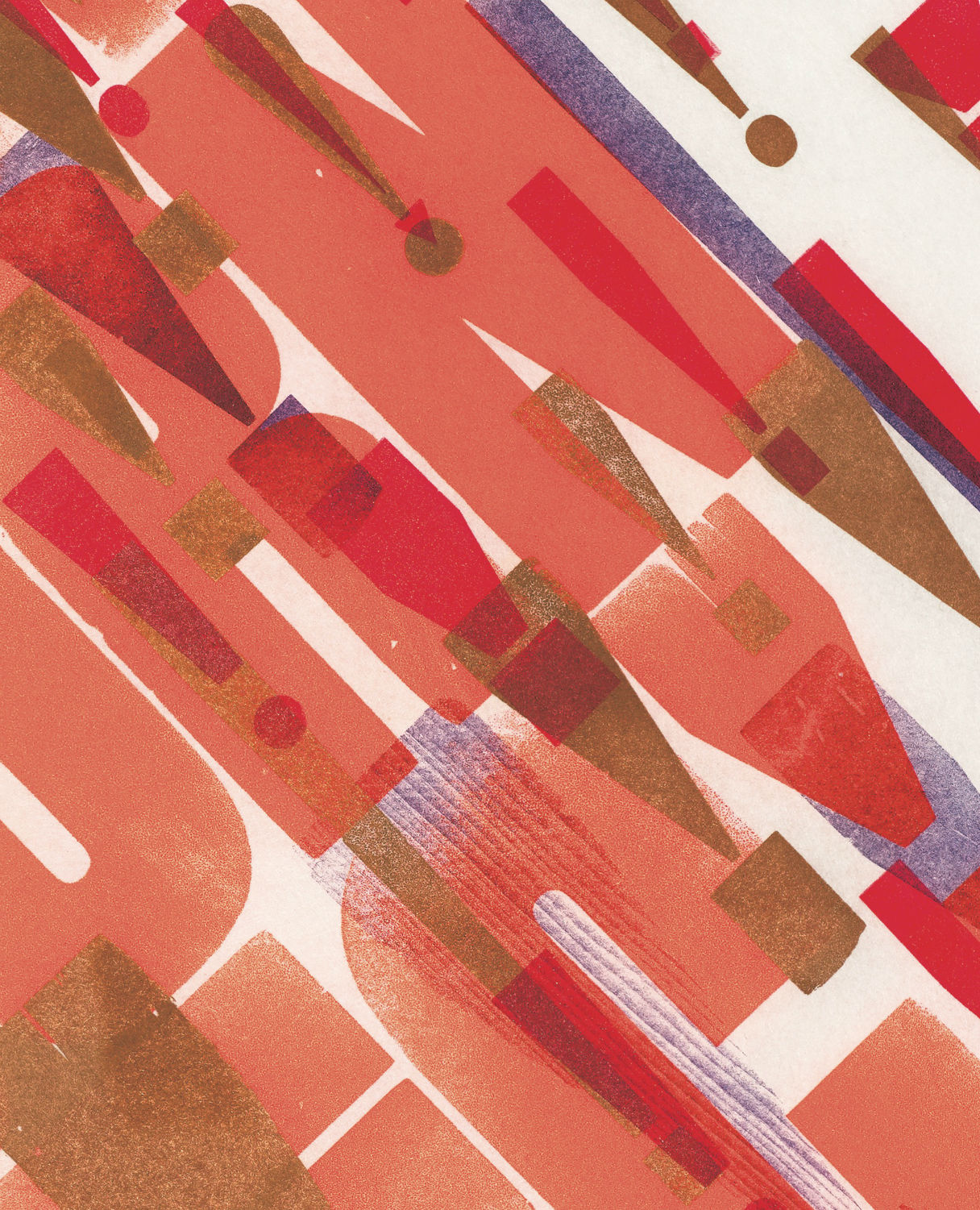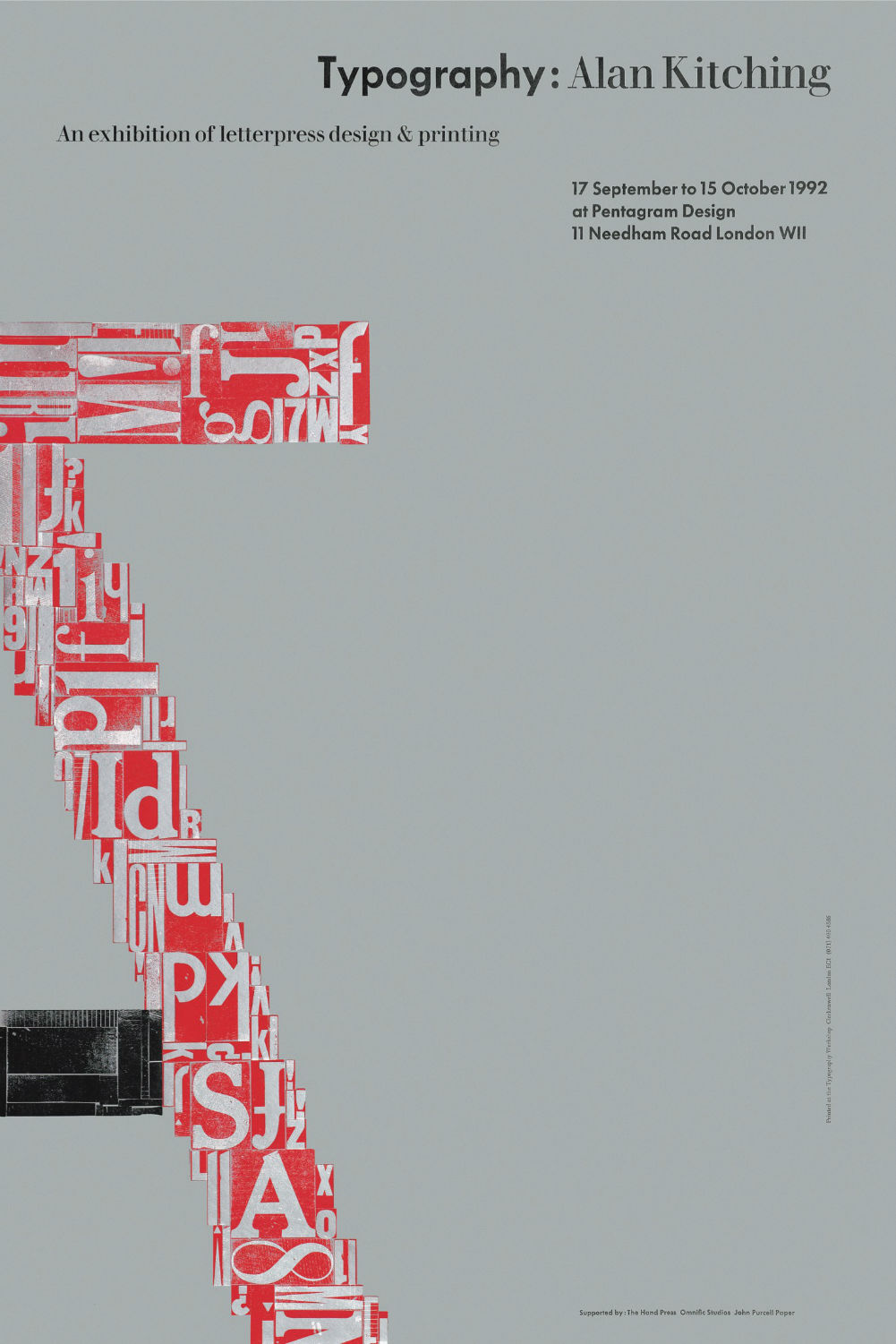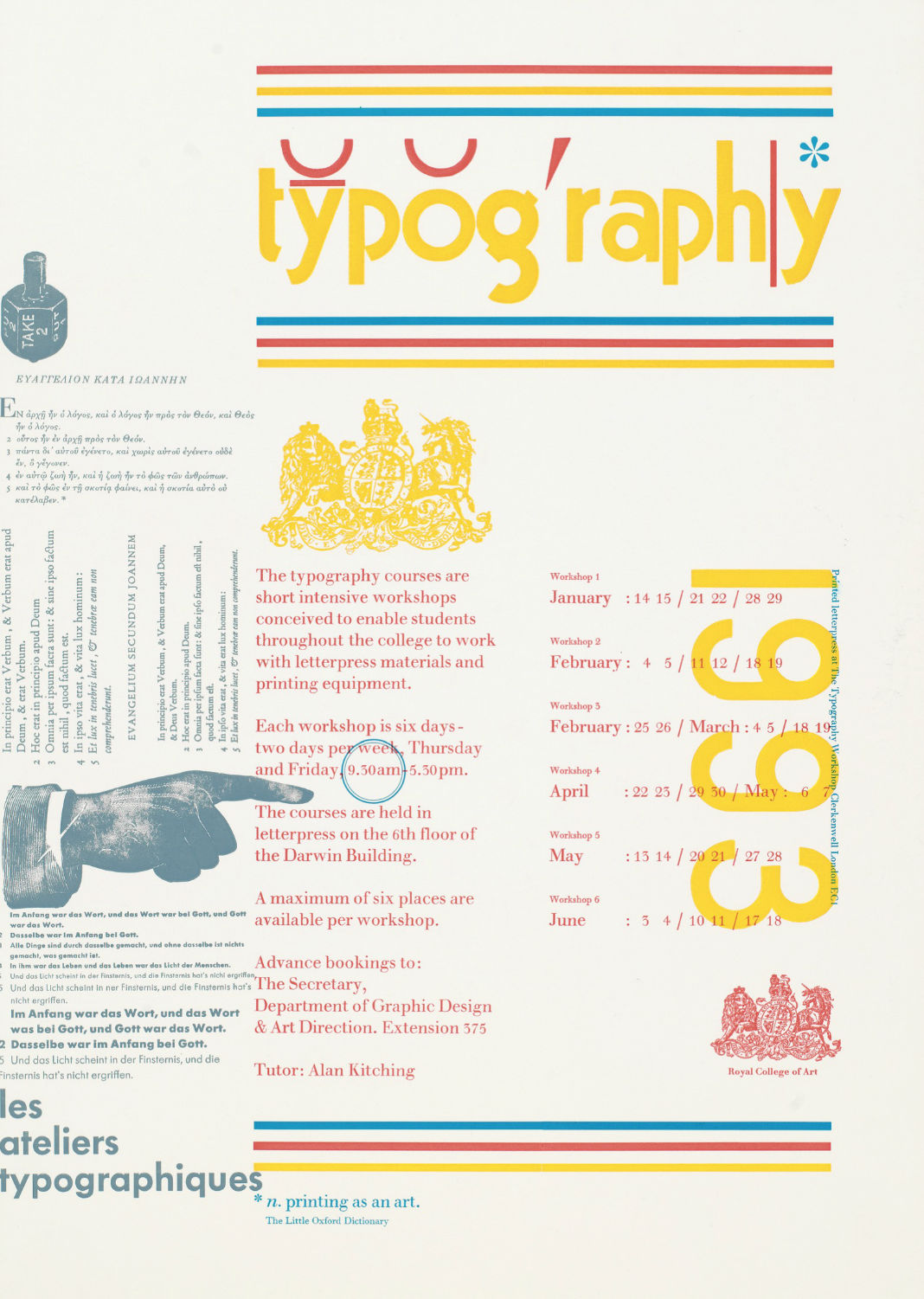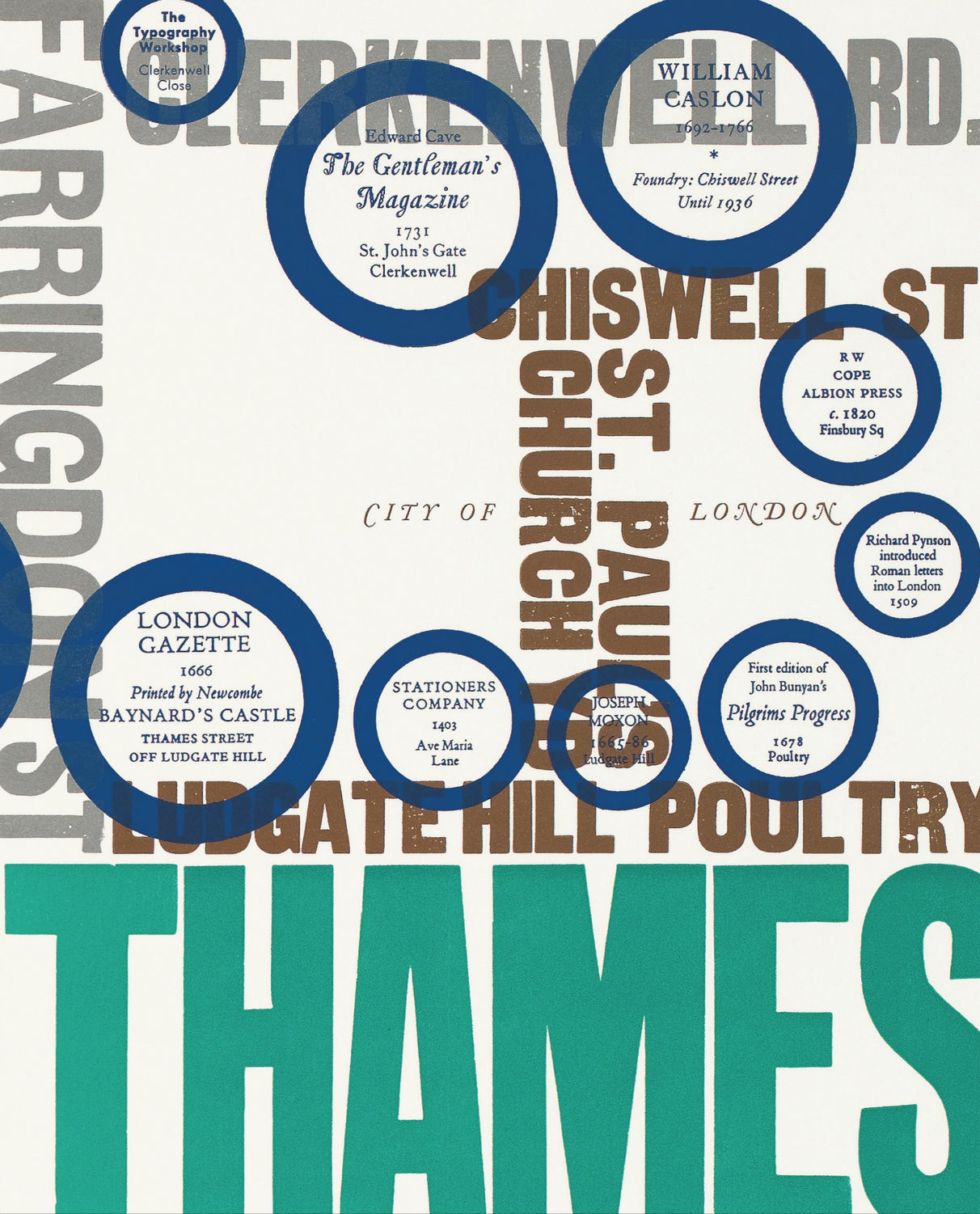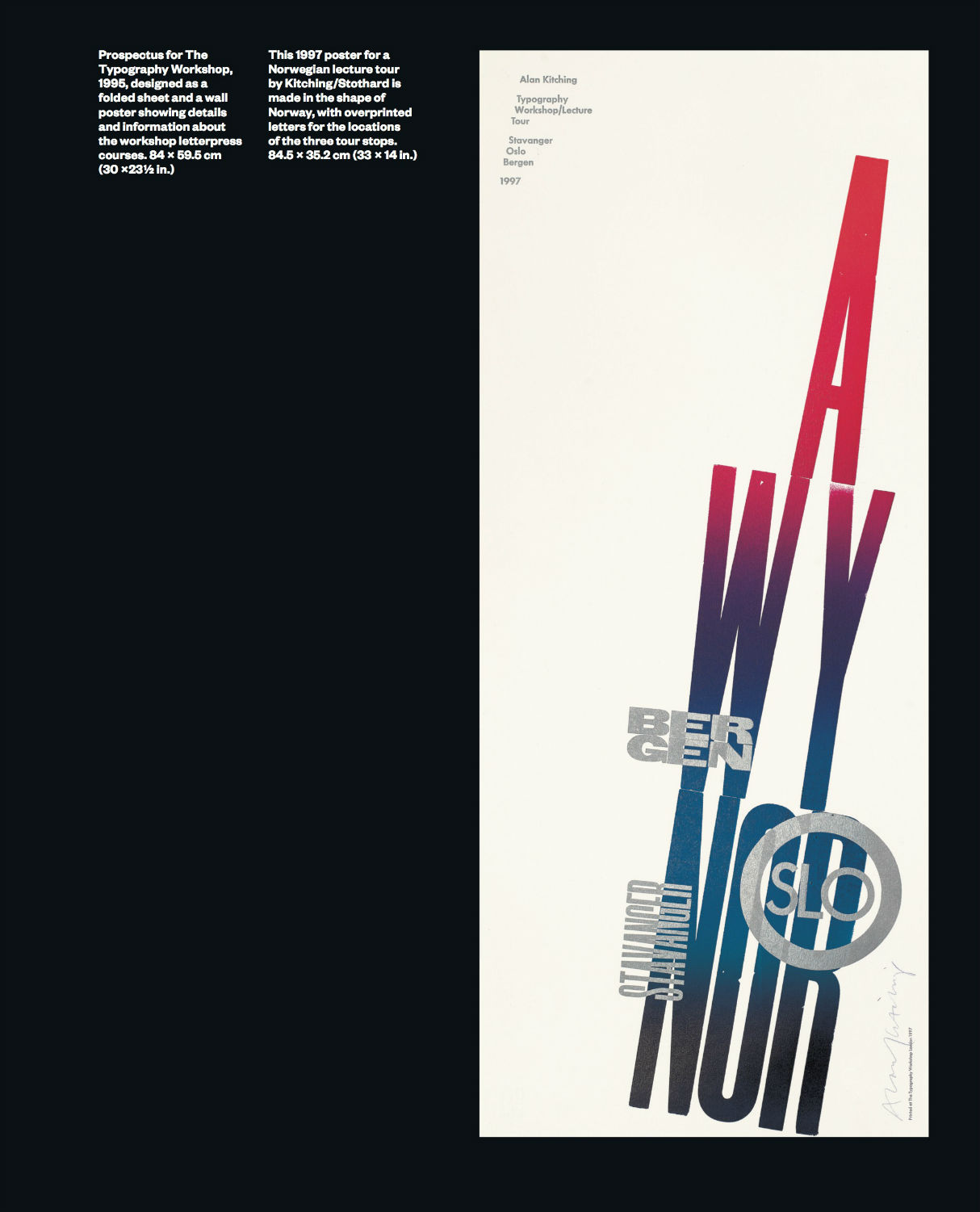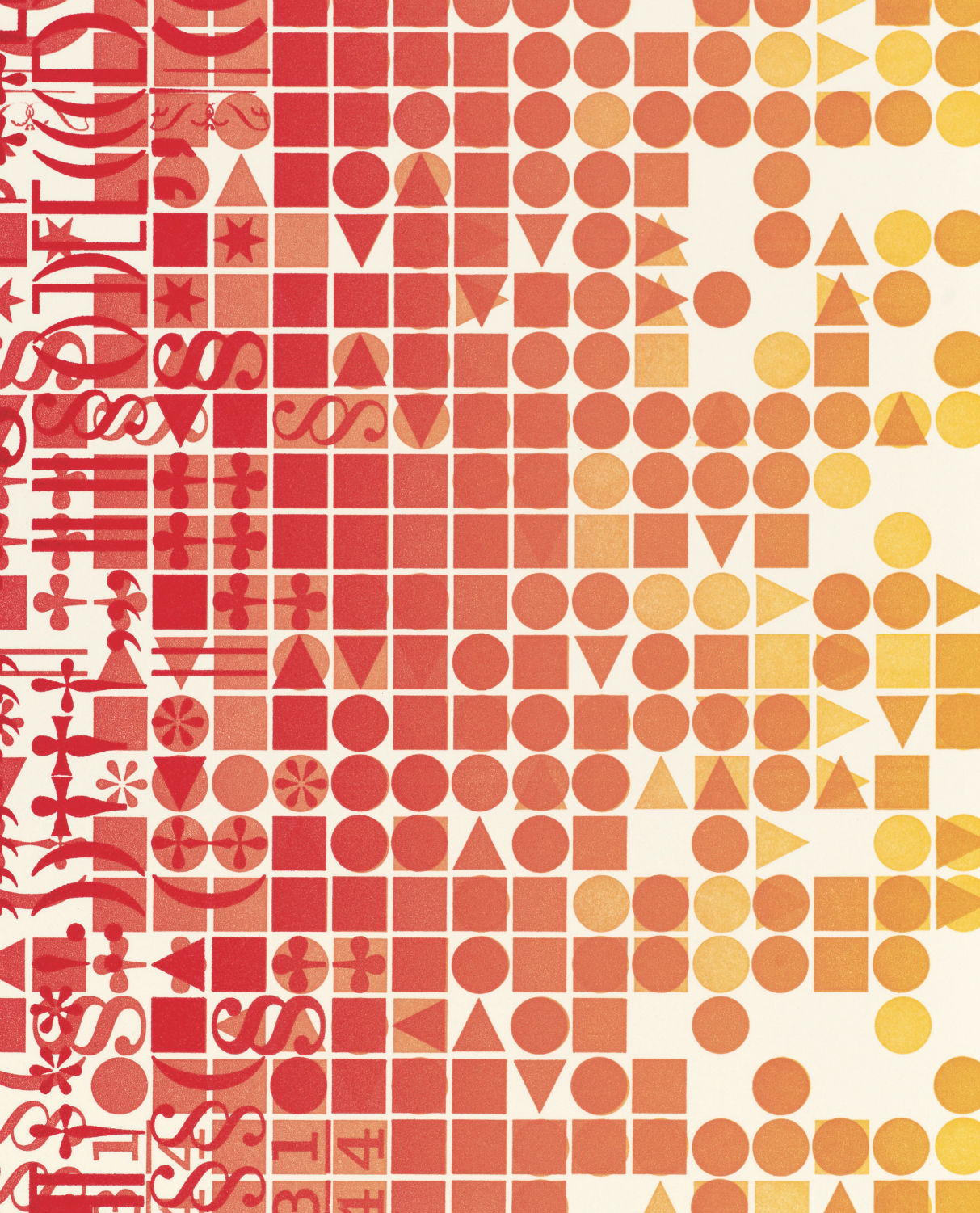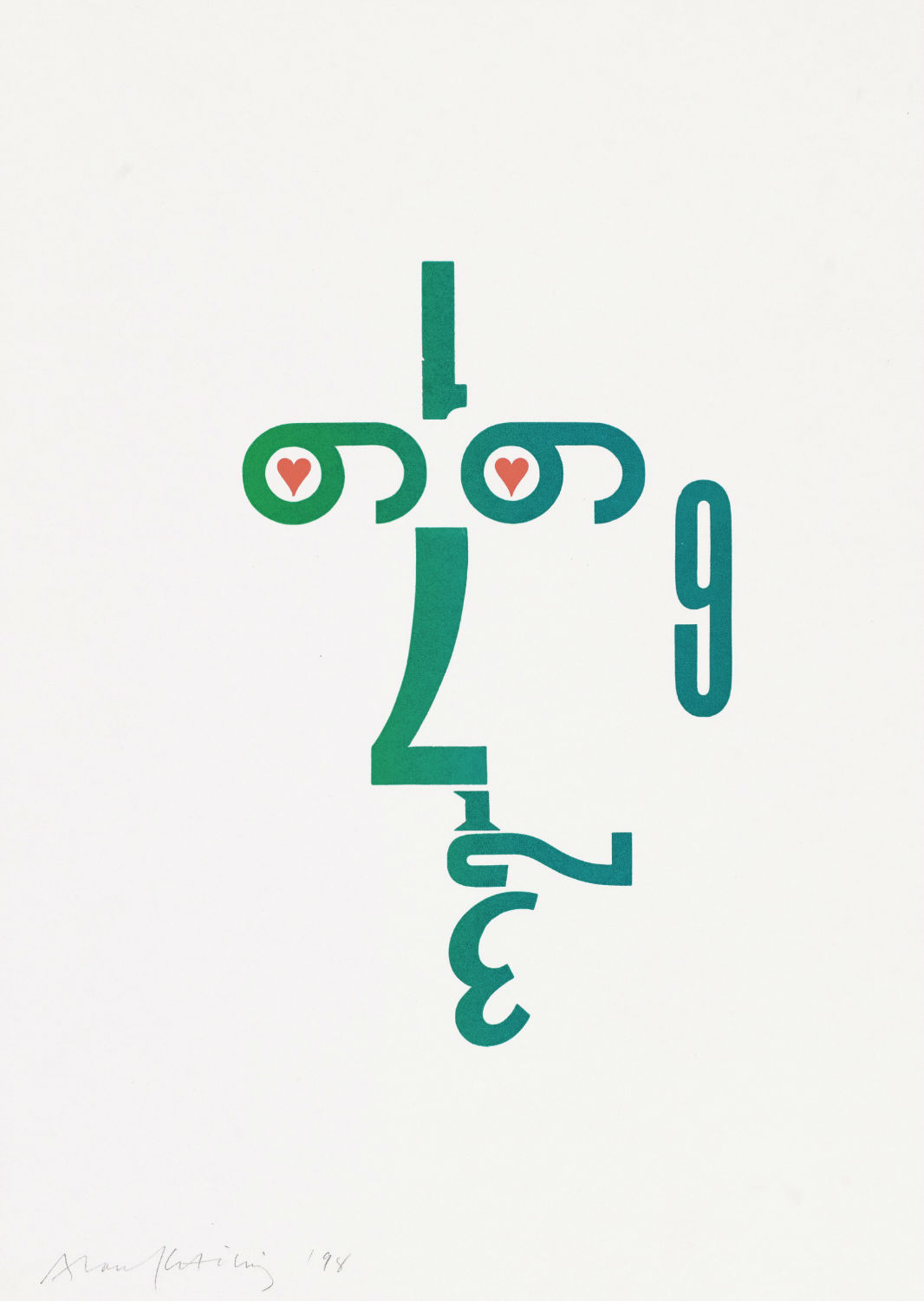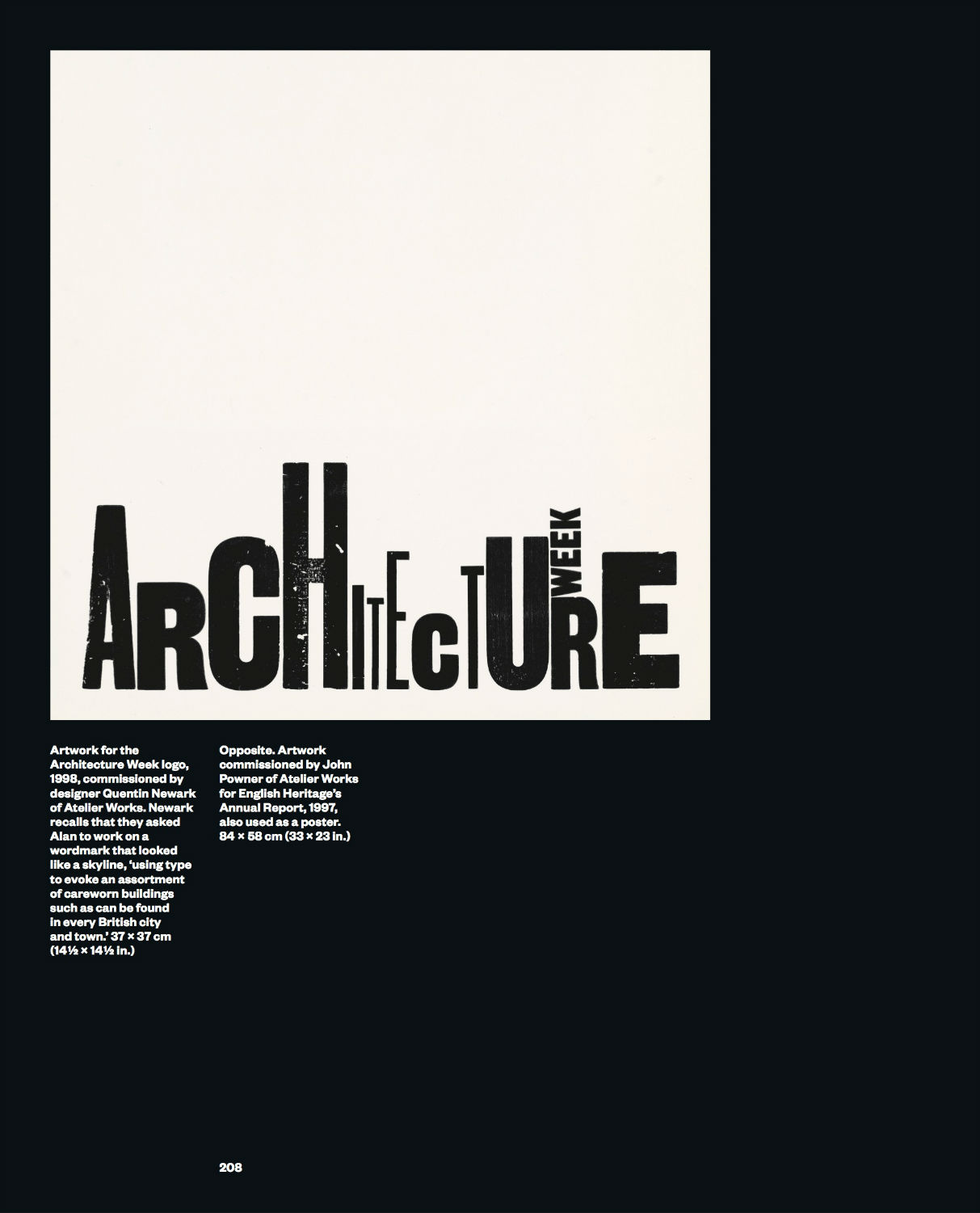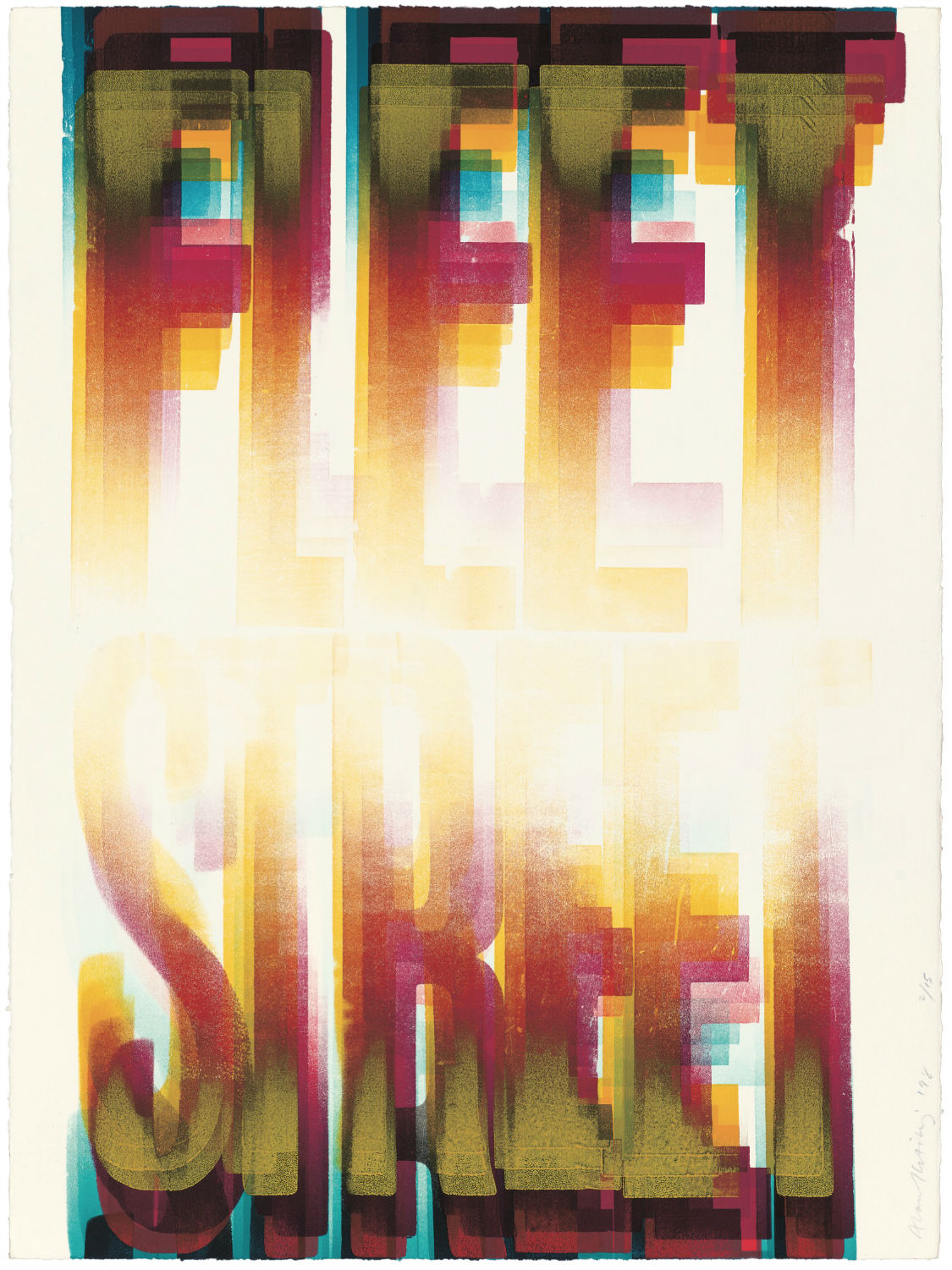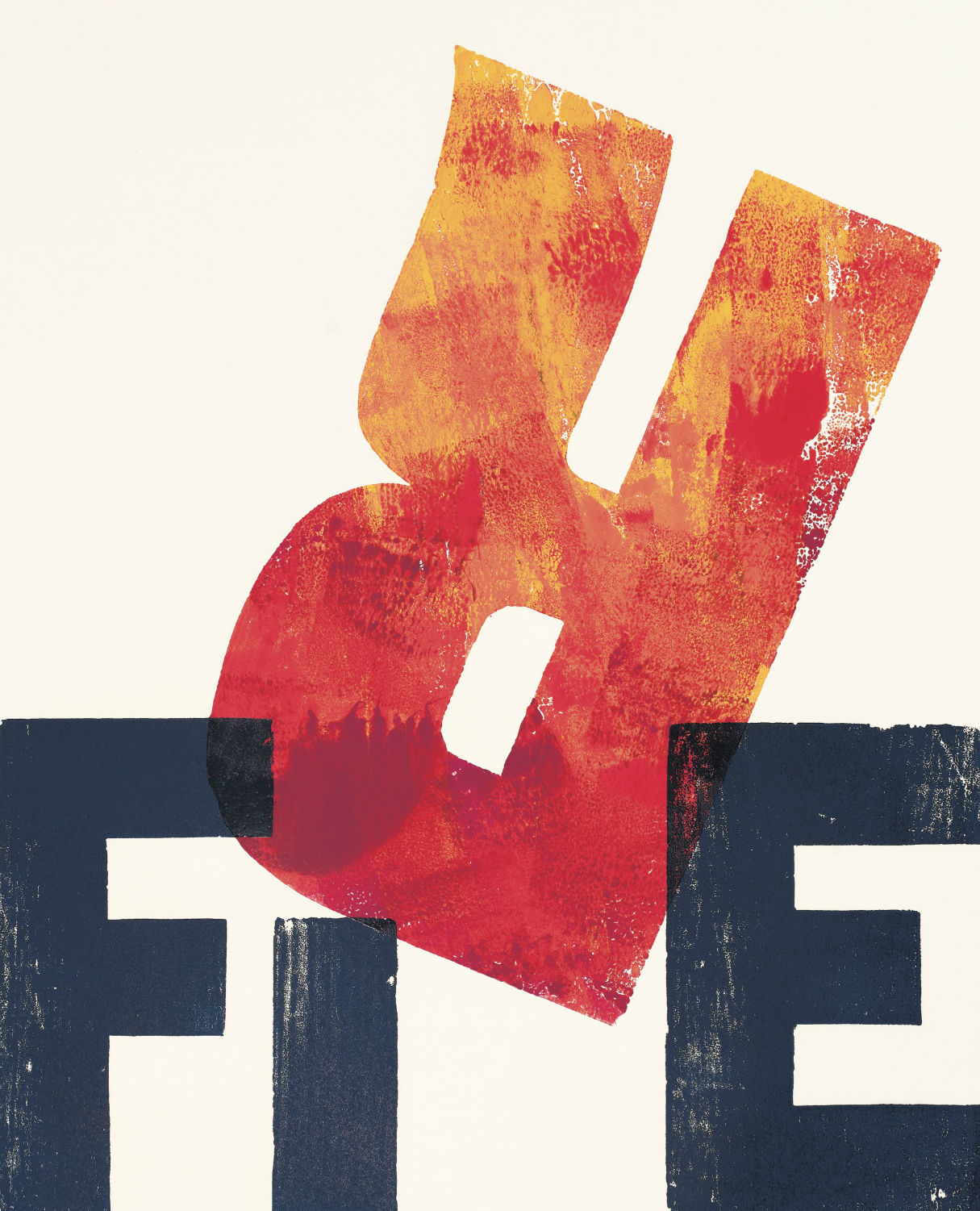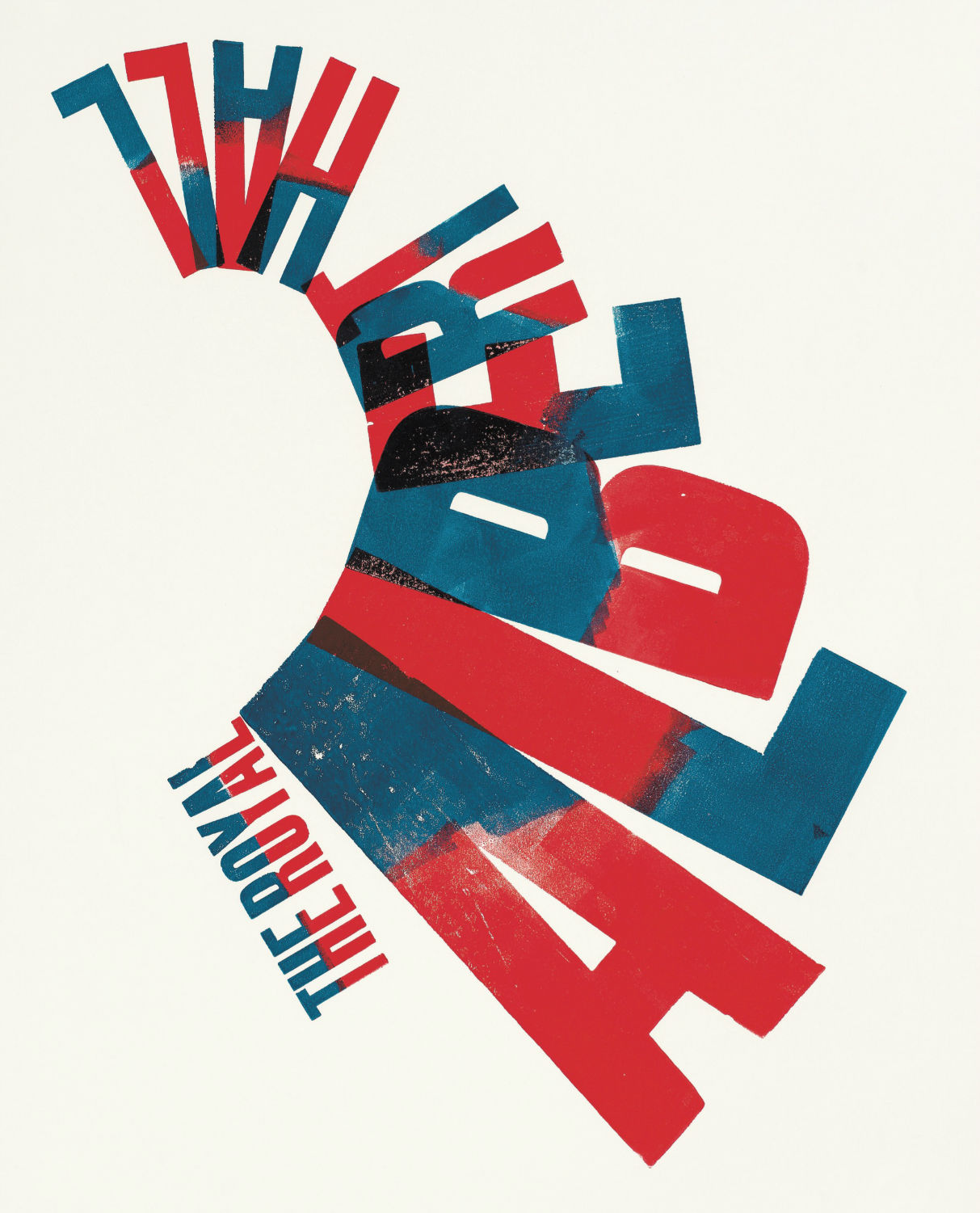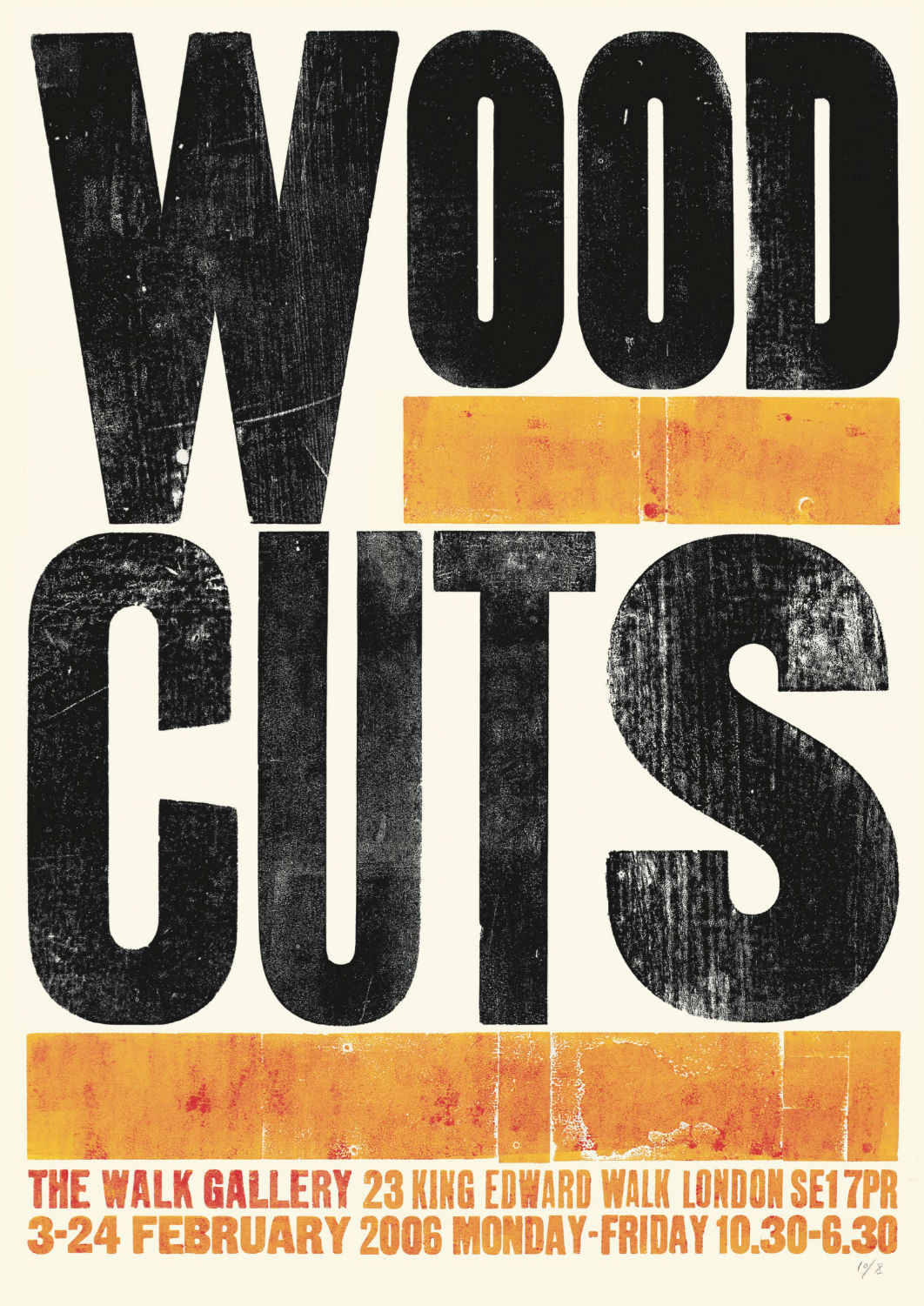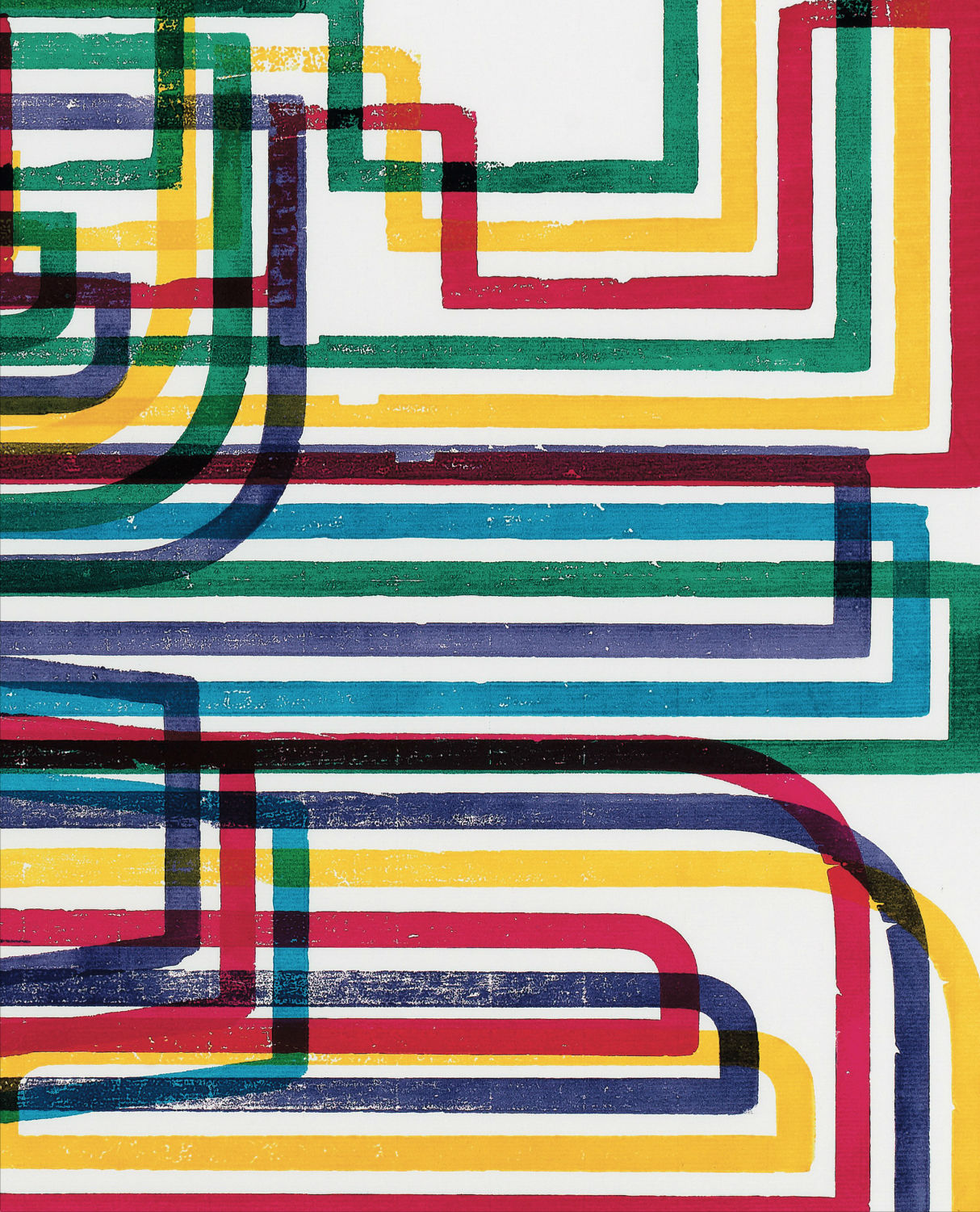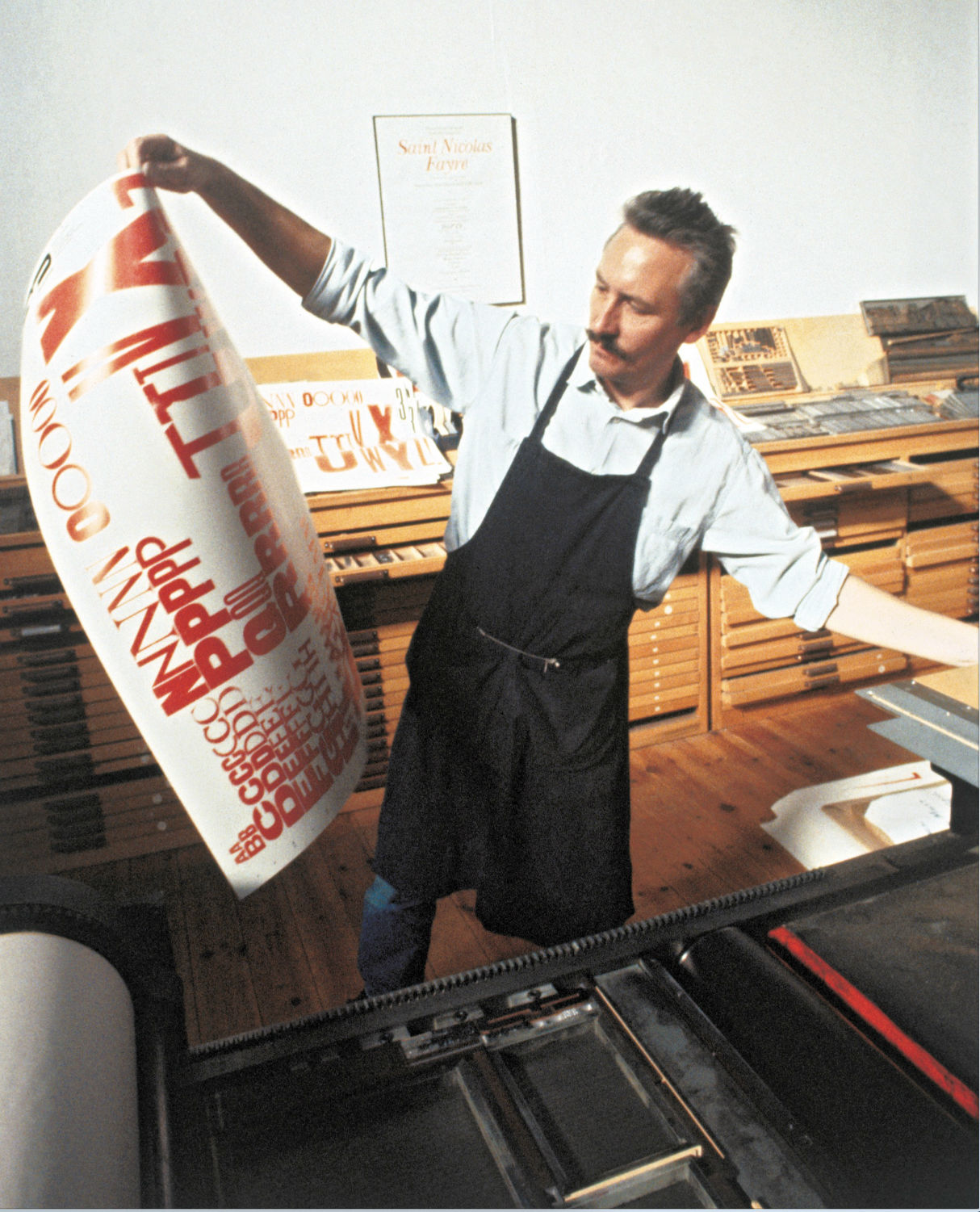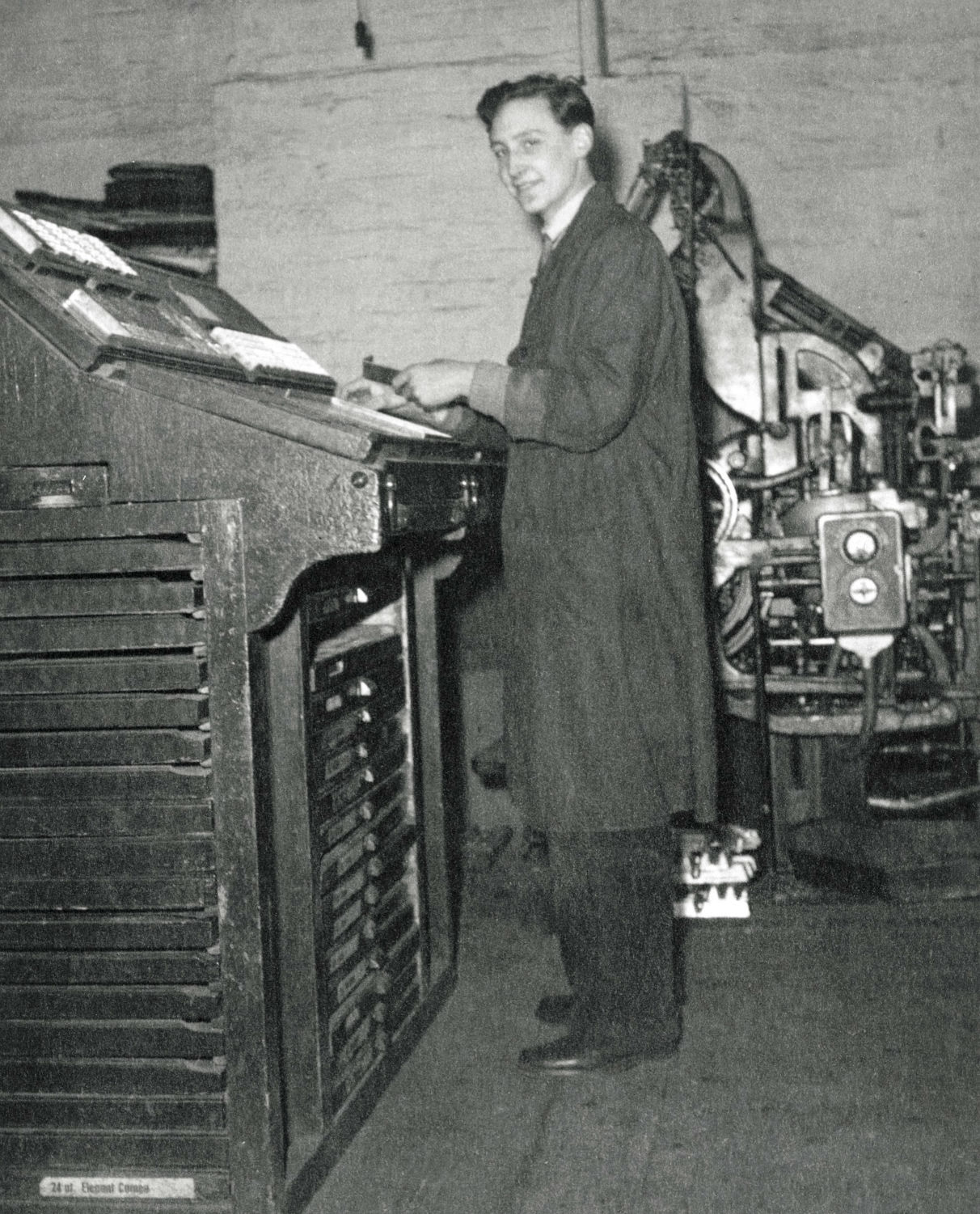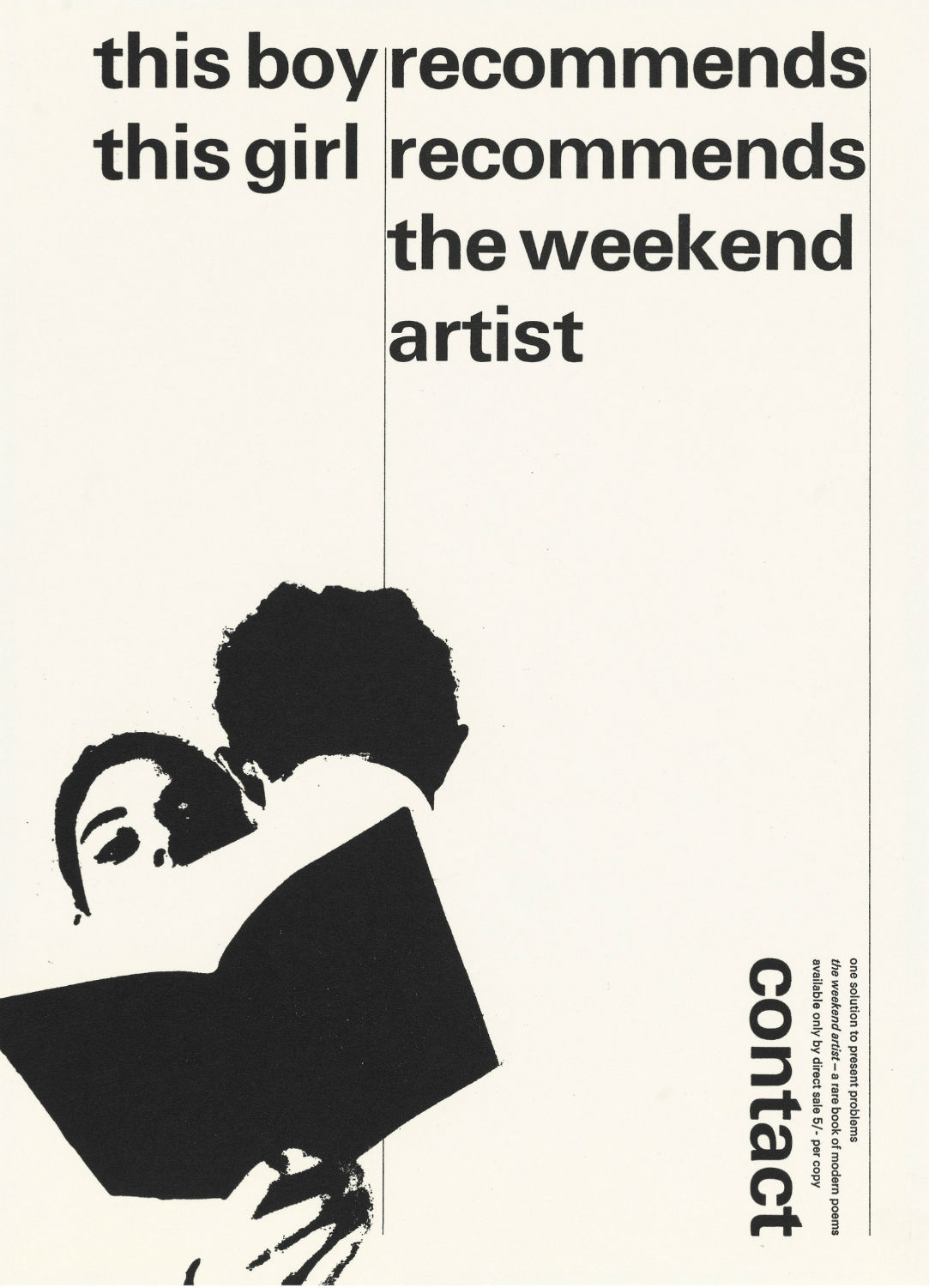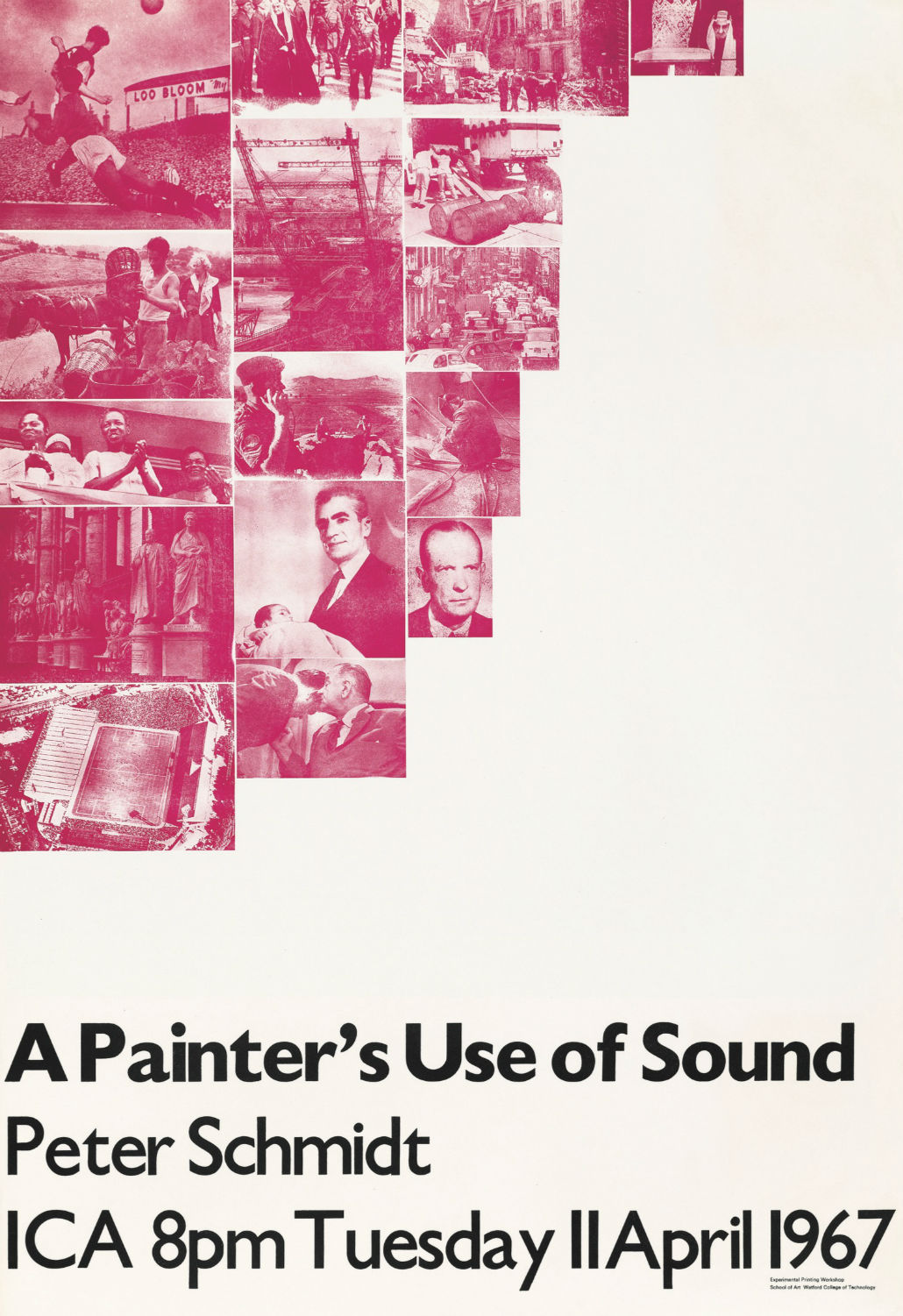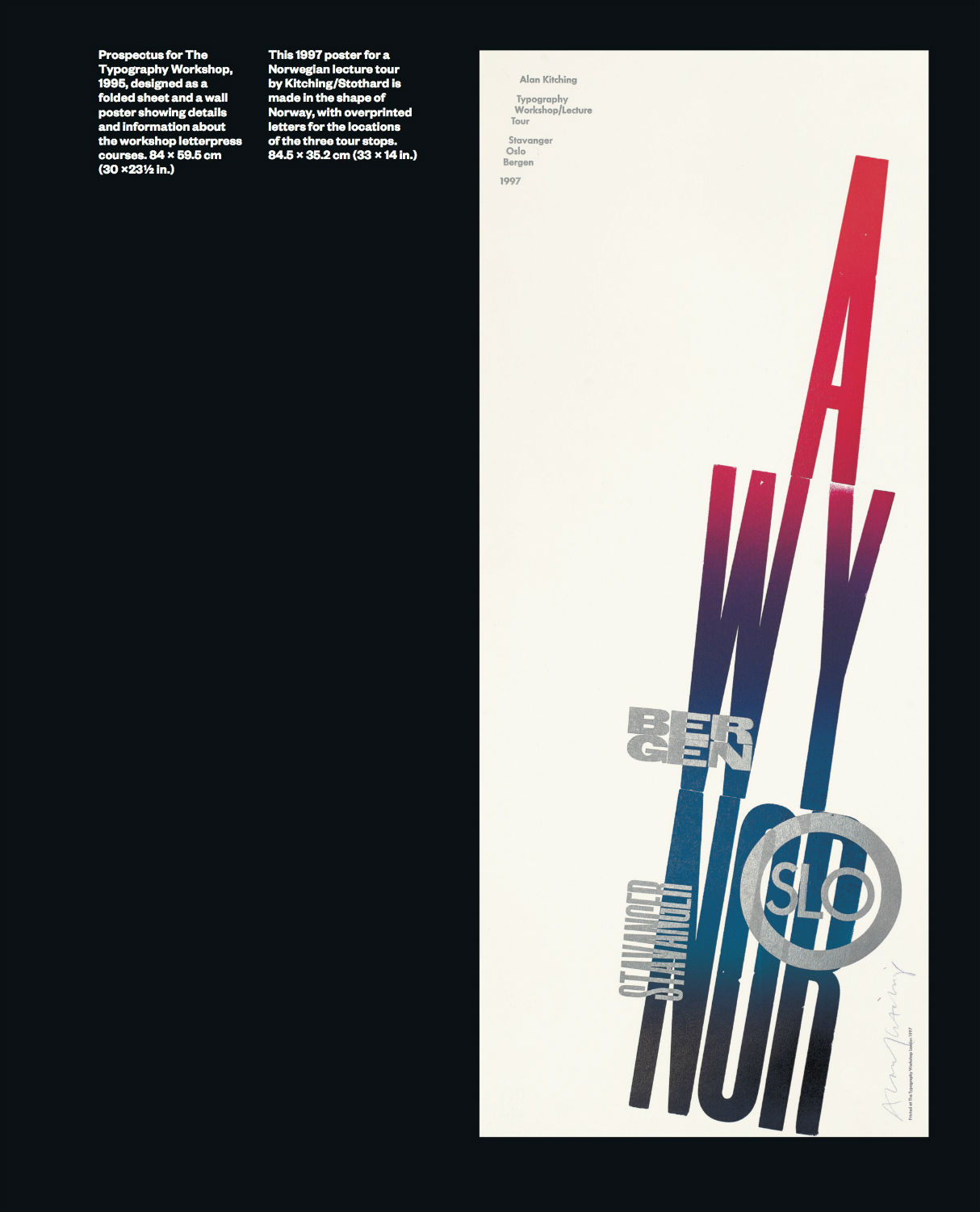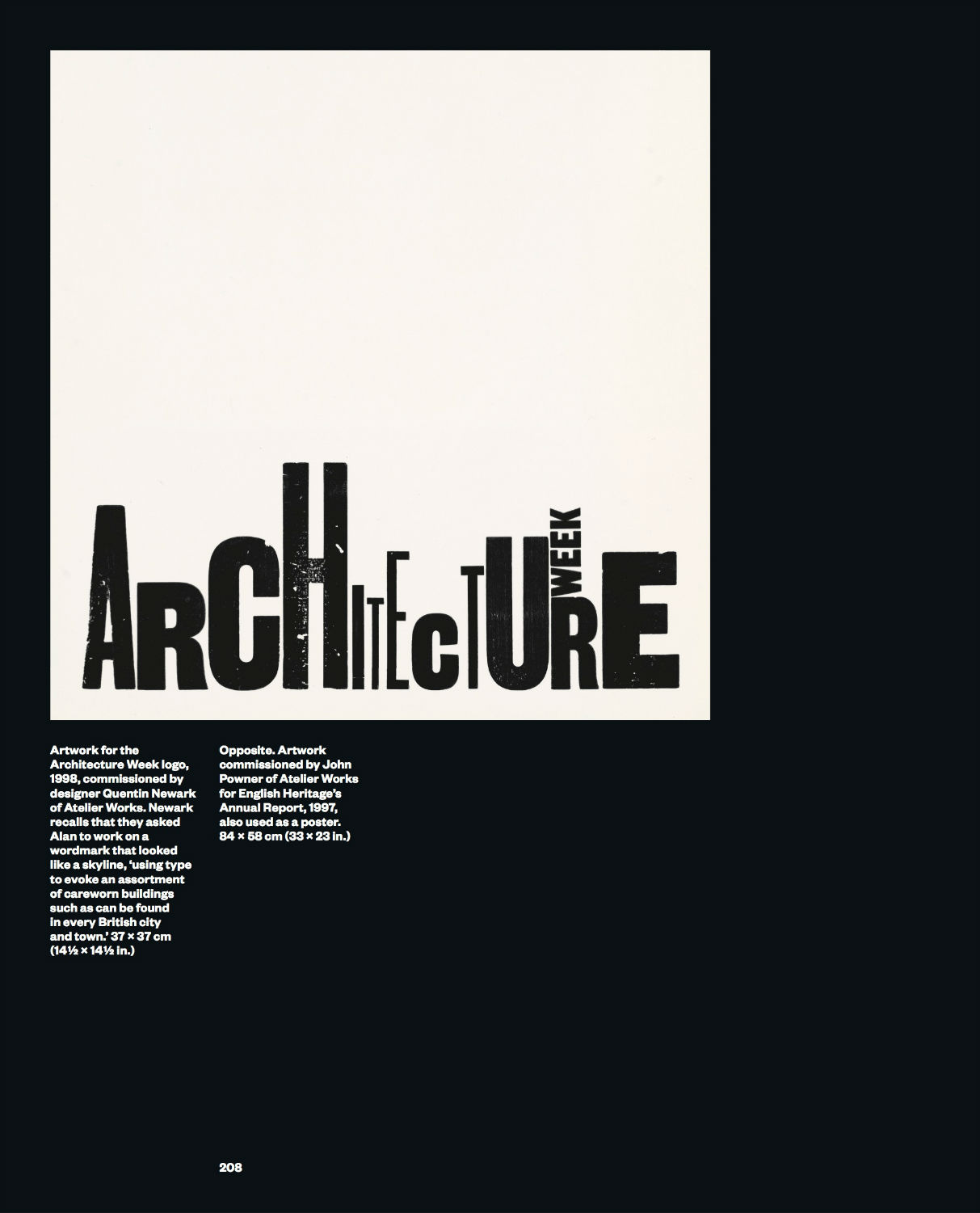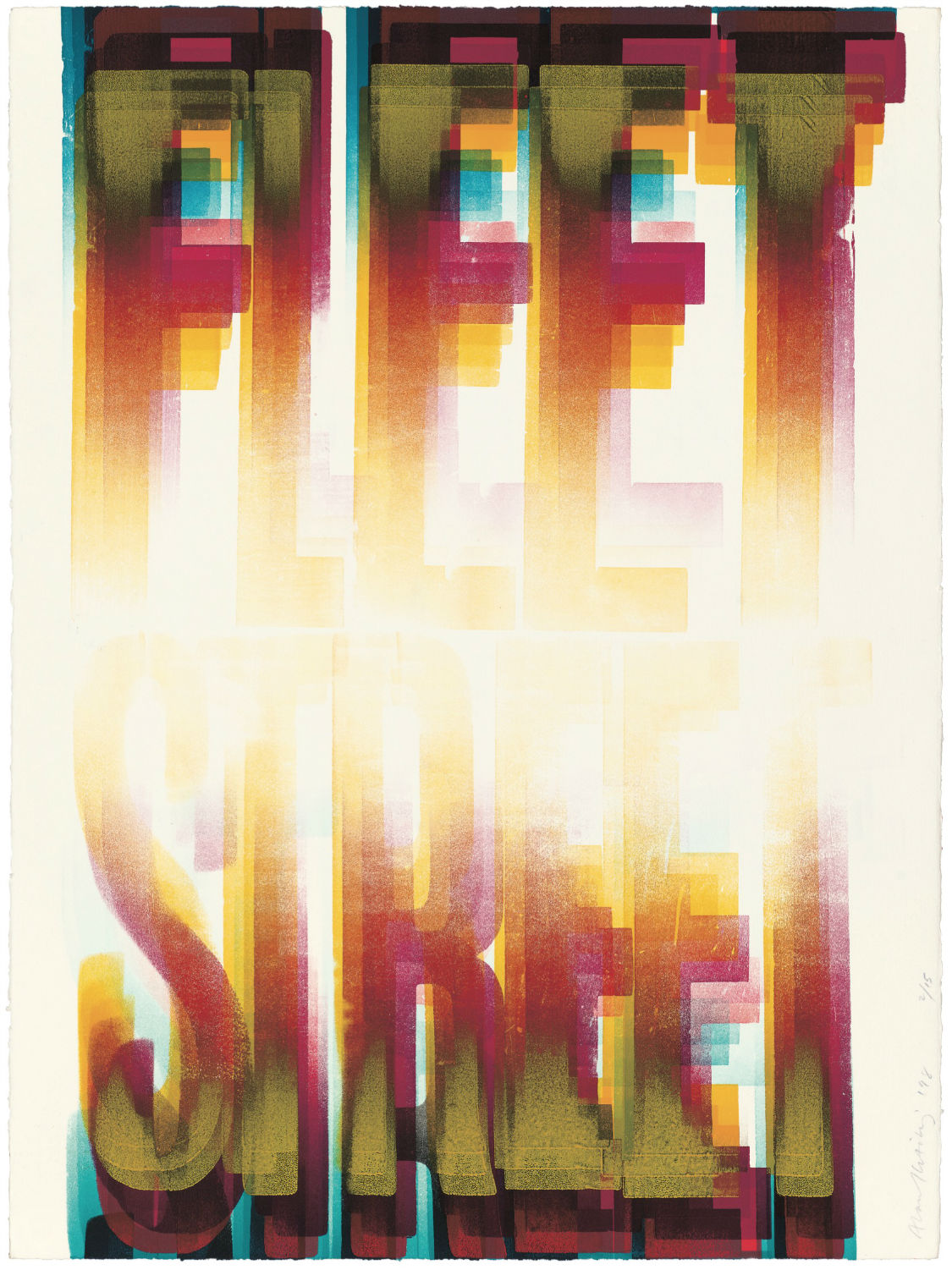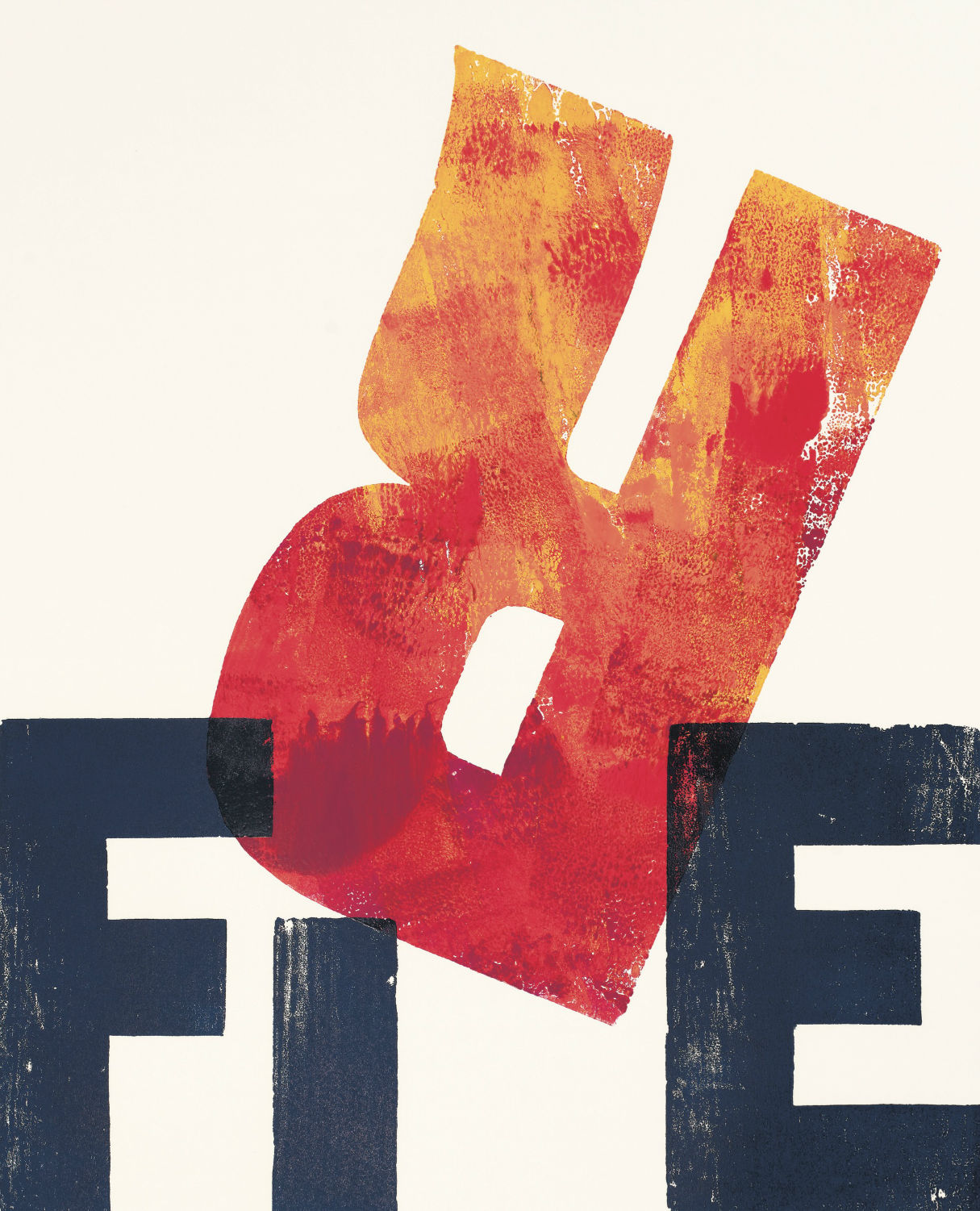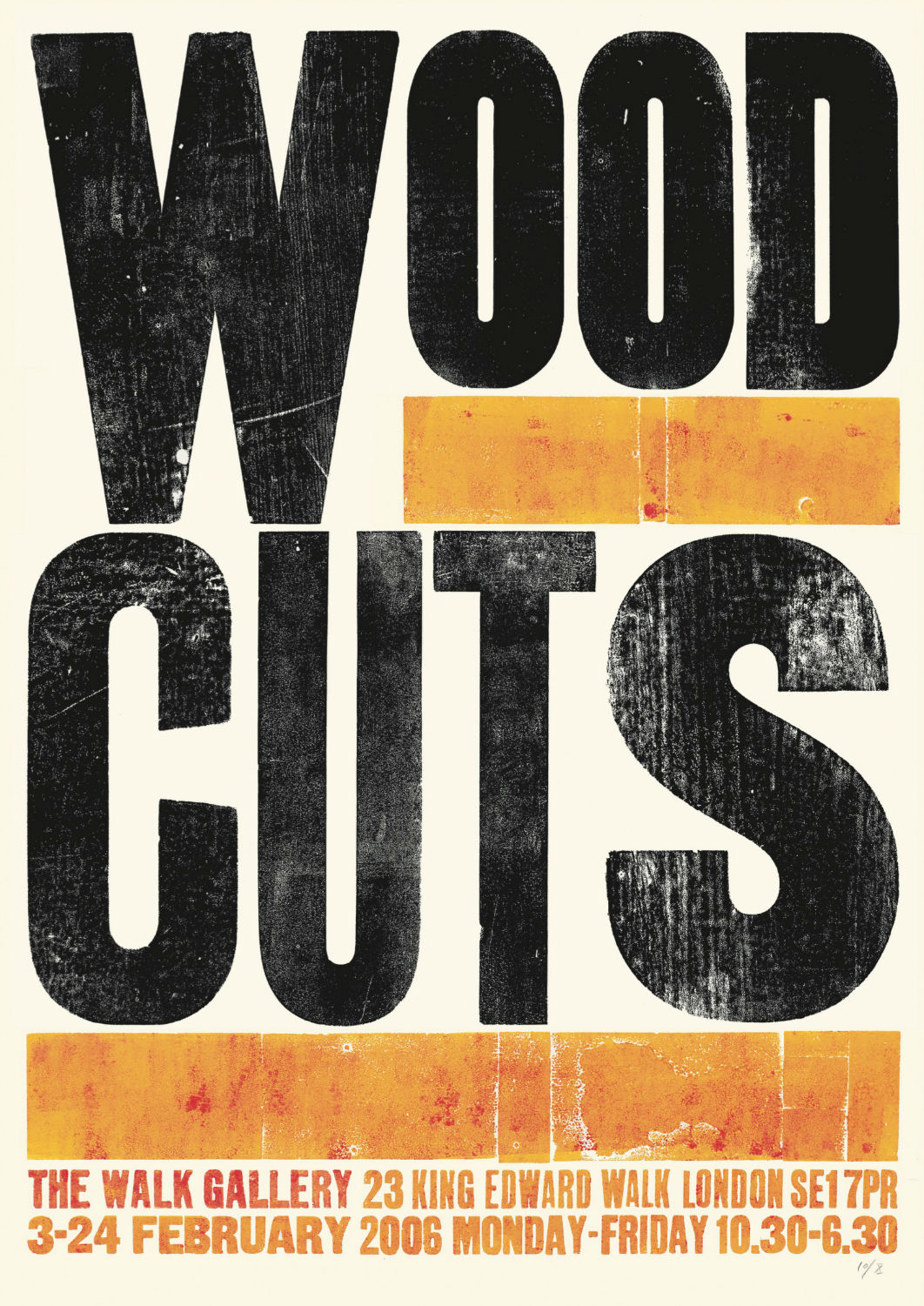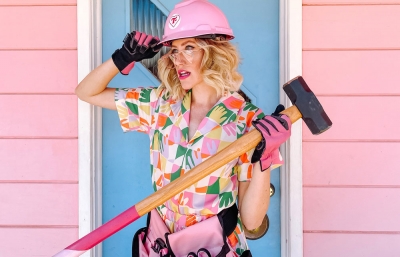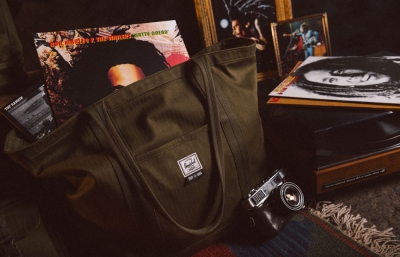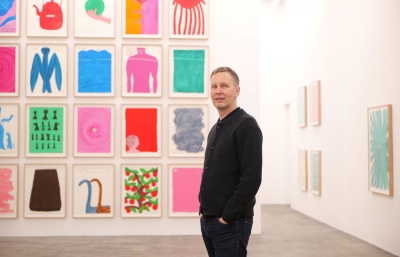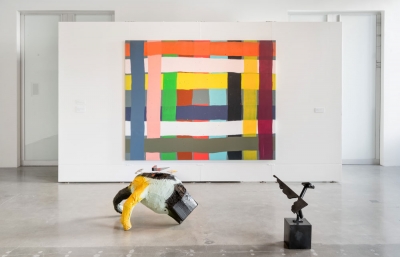The more and more the world delves head on into the digital revolution, a resurgence in the hands-on, craft-oriented, art making methods of years past are not only making a comeback, but are as vital as ever. From vinyl records sales going through the roof, to the newfound love of DIY maker methods, it’s clear that design, art and fashion are having a renaissance.
All imagery excerpted from Alan Kitching: A Life in Letterpress (Laurence King Publishing, 2017)
Alan Kitching is a world-famous letterpress artist based in London who removed himself from the digital world to work in the typographic arts and printmaking. His prominent place in the design world has helped empower a new generation of designers to think out of the box. With his recent monograph, A Life in Letterpress, out now via Laurence King, we sat down with Kitching to discuss the new revolution, going back to printmaking, and a handcrafted discipline.
Are you the kind of person who remembers a special time, like the first time you were drawn to typography and fonts? Not an “ah-ha” moment, but more like the first time you appreciated type?
Alan Kitching: I was introduced to typography at an early age, something like 13, at school. I had a very good art teacher.
In San Francisco, sign painting for businesses is a time-honored tradition that, over the past fifteen years, has come back into fashion. Was there a rich history of sign painting or typography in the northeast of England where you were born?
My grandfather was a sign writer for the railways, and it was from him that I first heard the name “Gill Sans,” which was the typeface that was used by the railways in the 1940s.
Your book is such a beautiful and substantial collection, not just in terms of your history, but the history of design and type in the 20th century. That said, did you perceive defined moments where you started to see trends changing from the full-on digital revolution to this really great, newfound appreciation from a generation of people who are quite engaged in the handcrafted, letterpress method?
It was in the 1970s when I first noticed a change in the use of typography. The graphic world was changing to photo composition, and the use of “letraset” was the big change, not only in technique, but also new founts were being designed to be included in the letraset range. And now, the whole graphic world has changed even more dramatically with the digitization of founts. You notice I’m using the original spelling of the word, “founts.”
There is this cool emphasis in the book about the late 1980s, early 1990s, and how you resigned from Omnific and went "back to something you knew." What drew you back to letterpress?
The world of graphics was changing rapidly, and I wanted to do something different. At the time, I was not sure what. But I had this knowledge of letterpress, which was dead and buried, so I turned back to my first work practices.
In the book, Philip Sayer's wordless photo essay is an engagingly illustrative interlude in between the history and chronicles of output that simply shows you at work, doing the work. Maybe this is too broad of a question, but can you describe your step-by-step method of making an assignment or project come to life, from initial illustrations to final product?
It all starts with the words and the meaning of the words. I do small sketches, then I make 3D collages with the woodblock types, then I proof up the collage, then I take it all apart again, then I work the first proofs—it’s a long, drawn out process.
Of everything you have learned about letterpress design and art over the years, if you were to give advice to young designers who are getting into the business now, what would you say? What sort of questions do young artists ask you?
I alway say to listen to the client describe what it is they are after. Somewhere in the conversation, you will hear what it is they want. I’m often asked about the process I use in the making of my prints... and I get asked about the use of color, which again comes from the words and the text.
What projects do you find yourself and the Typography Workshop involved in most these days?
I’ve had an agent for the last 25 years or so, from whom I still get commissions. I also work through a gallery, Advanced Graphics London, who I sometimes work with in collaboration.
Do you feel like the future of letterpress design is in good hands? Are you excited about its future?
I think any handcrafted discipline will always have a fascination for people.
----
Originally published in the April 2017 issue of Juxtapoz Magazine, on newsstands worldwide and in our web store.

